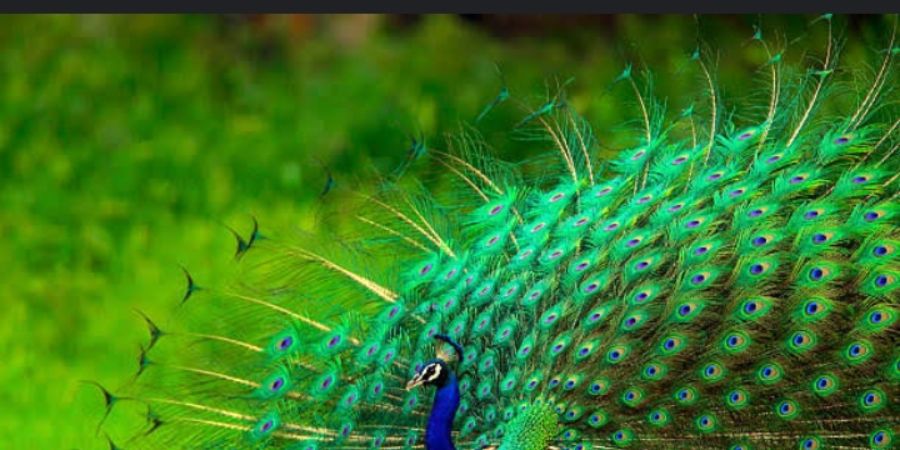

Any of the three species of flamboyant birds of the Phasianidae (order Galliformes) pheasant family are known as peacocks, also known as peafowl. The blue or Indian peacock (Pavo cristatus), which is found in India and Sri Lanka, and the green or Javanese peacock (P. muticus), which can be found from Myanmar (Burma) to Java, are the two species of peafowl that are most easily recognised. After a search that started in 1913 with the discovery of a single feather, the Congo peacock (Afropavo congensis), which inhabits the forested interior of the Democratic Republic of the Congo, was discovered in 1936.
Natural:
The male blue and green peacock has a body length of 90–130 cm (35–50 inches) with a 150–60 inch train of beautiful metallic green tail feathers. The vastly expanded top tail coverts of the bird make up the majority of this train. An iridescent eyespot with a blue and golden ring sits at the tip of each feather. The cock raises his tail, which is underneath the train, during courtship displays, which raises the train and moves it ahead. The tail feathers quiver at the height of the show, creating a rustling sound and shimmering appearance in the train's feathers.
Blue peacock :
The body feathers of the blue peacock are predominantly metallic blue-green. The body feathers of the green peacock are green and bronze, and its train resembles those of the blue one. Both species' hens lack the train and the head decoration but are green and brown in colour and practically as large as the males. Both species can be found living in open lowland forests where they gather in large groups during the day and roost on trees at night. The male creates a harem of two to five hens during the breeding season, and each of them lays four to eight whitish eggs in a dip in the ground. The peahen keeps the eggs warm until they hatch about 28 days later. One week after hatching, the chicks can fly and have all of their feathers when they come out of their eggs. At age three, the majority of blue and green peafowl reach sexual maturity. However, some blue peafowl males have been observed to breed as young as two years old. The peacock is a common resident of many zoos throughout the world and is well-known across the Old World as an ornamental bird. However, due to their aggressive nature, green peacocks kept in captivity must be kept separate from other birds. Despite being native to warm, humid climates, blue peacocks can endure the harsh winters in the north. However, green peacocks can't stand very much cold.
